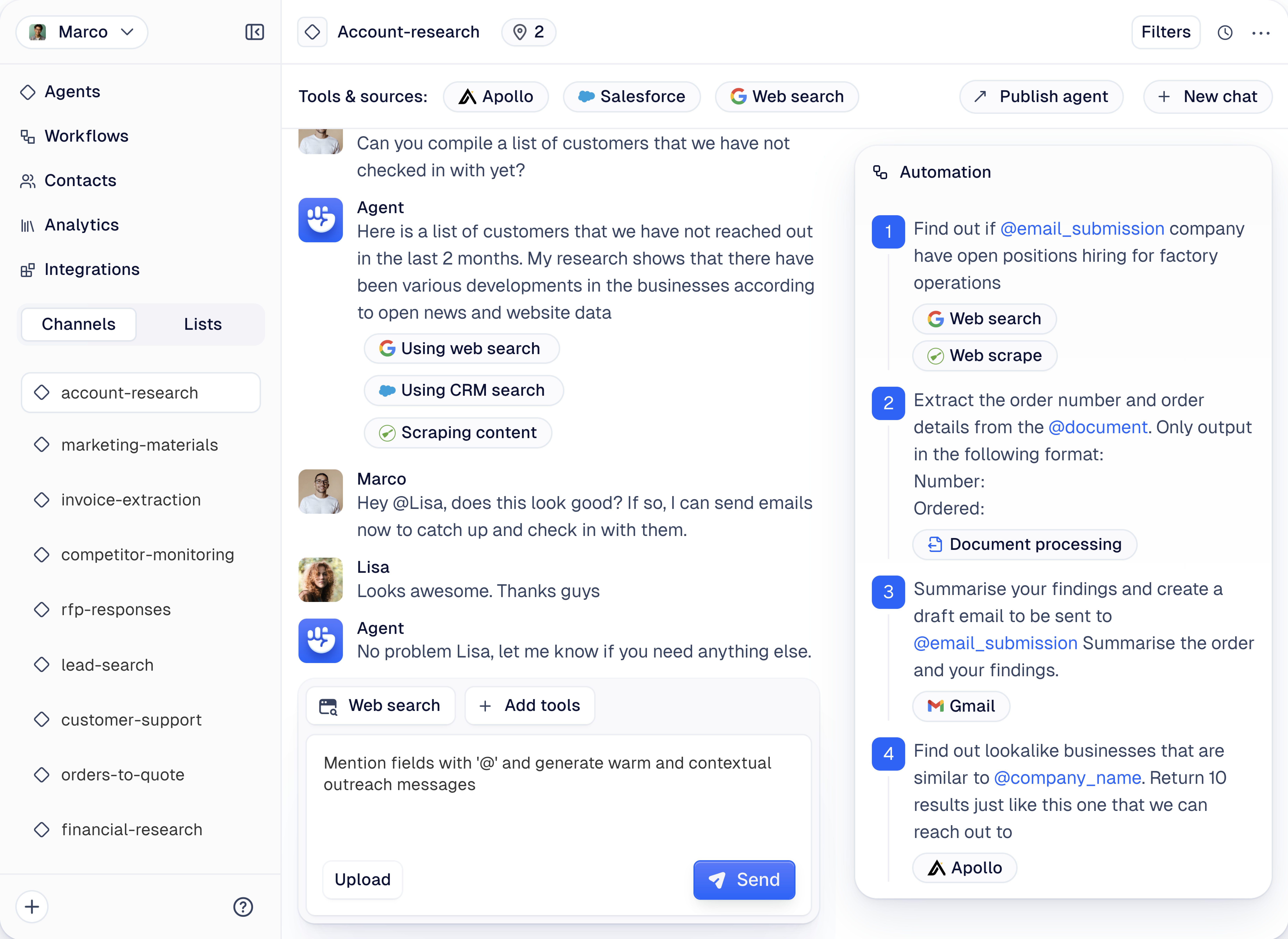September 26, 2024
by
Mert Deveci
Best tips for prompting to use for account and lead research
How to do effective prompting to get the best results?
Account research mostly consists of collecting unstructured crowded information from websites for each account.
This makes the task a cumbersome one. Requires a lot of reading and note taking.
AI can make it much better and faster. So far, the problem is that some prompts just don't give you what you want exactly. So after collecting around 60,000 prompts run in GodmodeHQ, we compiled the best practices you can use while writing a prompt.
Understanding Prompt Types
Prompts can be categorised into several types based on their intended purpose:
1. Research and Analysis
- Company Overview
- Financial Intelligence
- Industry Analysis
- Hiring and Leadership
- Event Tracking
- Personal Research
2. Data Interpretation
- Ideal Customer Profile
- Business Model Analysis
- Pain Point Identification
3. Content Generation
- Outreach Emails
- LinkedIn Messages
Crafting Effective Prompts
1. Be Specific and Detailed
The more specific your prompt, the better the AI can understand and respond to your needs. For example:
Find out any press releases that have been made by @Company in the last 6 months
This prompt clearly defines the type of information needed and the time frame.
2. Use Context Markers
Employ markers like @Company, @person, or @name to indicate where the AI should insert specific information:
Write an outreach email to @name. First, greet the person by name then compliment something from @Company_description
3. Break Down Complex Tasks
For multi-step tasks, break them down into smaller, manageable steps:
Read through @company_description and determine if @Company is doing B2B or B2C
4. Set Clear Parameters
Establish clear guidelines for the output you want:
Keep the email to a maximum of 50 words. Make sure each paragraph is one sentence. It's crucial that the writing is at a 3rd grade level.
5. Encourage Inference and Analysis
Ask the AI to draw conclusions based on given information:
Read through @company_description and infer 3 potential pain points that are relevant to @user_company_description
Real-World Applications
1. Sales and Marketing
- Crafting personalized outreach emails
- Identifying ideal customer profiles
- Analyzing competitors
2. Research and Development
- Tracking industry trends
- Monitoring recent developments in a company
3. Recruitment
- Identifying hiring needs of potential clients
- Crafting recruitment outreach messages
4. Business Intelligence
- Analyzing business models
- Identifying company pain points

